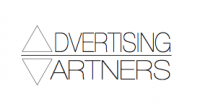Client Challenge
Our client, a large US Automotive Parts Manufacturer (~ $550M Annual Revenue) with a one hundred year history of selling original equipment (OE) directly to automakers worldwide. With more than 150 global customers, our client’s network of accounts is both broad and deep. It has always been the case that Stant’s clients engage several years in advance in order to have prototypes developed and validated. Once the prototypes are perfect, the clients deliver large purchase orders for units for many years. After an expiration period, products are then sold in the aftermarket through global chains of auto parts stores. Historically, our client sells aftermarket parts only through partners and retailers (Business to Business). Now, due to advances in ecommerce and mobile commerce, Stant has an opportunity to sell directly to consumers. This is attractive as there are significantly improved margins, although directly selling to consumers creates a new set of marketing communication challenges.
Hypothesis
By segmenting both products and buyers, we can dedicate commerce sites to match our message to our buyer’s intention. With targeted advertising that drives the right customers to sites that we will develop, we can sell more product, and acquire more customers, all while reducing costs.
Solution
We chose to launch individual brand-identified websites that includes specific calls to action that matched the consumer intention. We called them product sites, as the company developed three unique consumer focused products that were mutually exclusive. Each product site followed a very carefully defined on and off page SEO message. Each brand site was implemented with modern infrastructure that looks and feels good on smartphones and tablets. We used Google AdWords to drive traffic and Google Analytics to measure the success of the communications (activity, quality, efficiency) and conversions (sales). We launched 3 websites for the client’s three most popular products (Thermostats, Fuel-Caps, and Radiator caps). Each site contained detailed parts selection tools, testimonials and ‘how to install’ communications designed to help the customer understand what to buy and how to install it. These information-rich communications were then planned, promoted and posted to the client’s social media. Fulfillment was pushed through the client’s Amazon Store.
Results
Although initially we included only store locators, a review of Google Analytics that employed goal setting insights taught us that consumers wanted to buy now. The client was not in a position to deliver on a one-on-one basis, so all traffic was driven to Amazon. The consistency with which consumers were driven to Amazon allowed the client to take over their Amazon Store fulfillment and recognized massive increases in Business to Consumer (Retail) sales.
Conclusion
Profit margins on products sold directly to consumer are often 600-1200% higher than those sold to wholesalers or Original Equipment Manufacturers. By establishing a direct sales channel to the consumer, the client learned the value of a good understanding of their end user. This new knowledge, when applied to the company’s goals, gave them a much more clear understanding of how they were profiting through the internet. Other benefits included improved pricing, and even localized targeting for factors that impacted their business such as weather conditions and cyclicity.
Do you have a similar challenge?
If you have a similar problem, or believe that you could benefit from the consulting services offered by Advertising Partners. Please feel free to contact us below.

